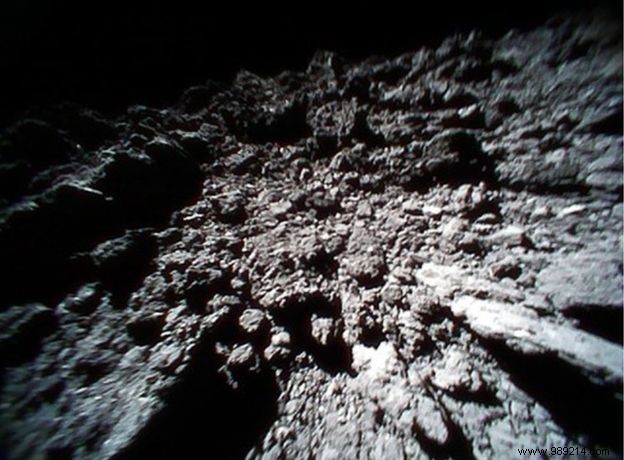Samples from the asteroid Ryugu, captured by Japan's Hayabusa2 probe, are expected to land in Australia on December 6, local time, agency officials announced yesterday. space of the two countries.
Standing on the surface of an asteroid, only the movie Armageddon could allow us to imagine it. But a few months ago, reality overtook fiction. In 2018, two small robots were detached from the Hayabusa-2 probe, from JAXA (Japanese space agency), to come and land on the surface of Ryugu. The asteroid, which measures 900 meters in diameter , evolves about 350 million kilometers from Earth.
On site, the two robots were able to take pictures of the surface, allowing us to appreciate the extraterrestrial environment. But more importantly, these images also allowed those in charge of the mission to better characterize the topography of the places .
The main objective of this mission was indeed to collect samples with the aim of bringing them back to Earth.
To do this, the Hayabusa2 mothership landed on the asteroid twice in 2019 (in February and July). Each time, the probe detonated a small portion of the surface to help capture dust. These samples were then put under seal.
Last November, the Japanese probe finally began its journey back to Earth. We knew that its landing was to take place in December 2020, but no precise date had so far been determined. It is now done.
Ryugu samples are expected to land at Woomera Range Complex on December 6th. This South Australian facility is operated by the Royal Australian Air Force.

Researchers are obviously eager to be able to analyze these extraterrestrial materials in the laboratory, where they can be studied in detail with powerful instruments. Ryugu samples could shed considerable light on asteroid formation and evolution , as well as the role played by these carbon-rich objects in the appearance of life on Earth.
Note that a second sampling mission, this time proposed by NASA, is also still in progress. The OSIRIS-REx probe is currently in orbit around Bennu (500 meters in diameter), another carbon-rich asteroid.
On site since December 2018, it is normally expected that the ship will collect its samples next October. If all goes as planned, this material will return to Earth in September 2023 , with a planned landing in Utah (USA).
Source